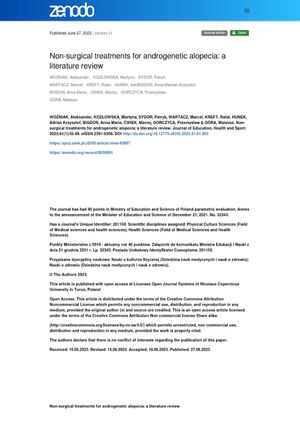Non-Surgical Treatments for Androgenetic Alopecia: A Literature Review
June 2023
in “
Zenodo (CERN European Organization for Nuclear Research)
”

TLDR Different non-surgical treatments like minoxidil, microneedling, and laser therapy can slow down and even reverse common hair loss, but each has its own limitations.
Androgenetic alopecia, a common type of hair loss affecting at least 80% of men and 50% of women before age 70, is influenced by genetic and hormonal factors. Various non-surgical treatments are available, including minoxidil, 5-α-reductase inhibitors, microneedling, platelet-rich plasma, low-energy laser therapy, rosemary oil, and siRNA. These methods, as per the literature review, have the potential to not only slow down but also reverse the progression of the disease. However, each method has its limitations. The understanding of androgenetic alopecia and potential strategies to halt its progression is continually growing due to an increasing amount of scientific research.



